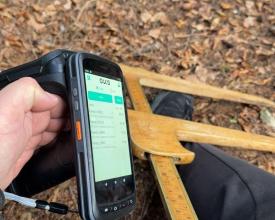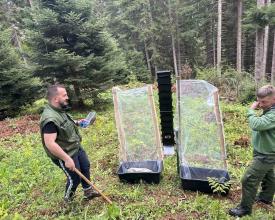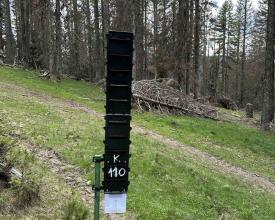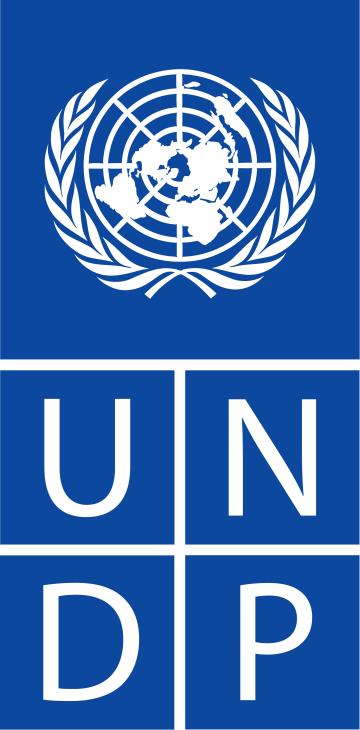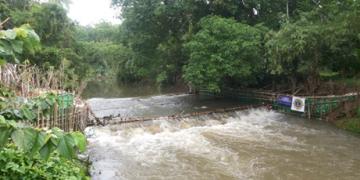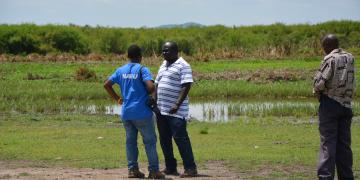
Innovative Technology Empowering Biodiversity Protection in Montenegro

In response to growing environmental challenges, Montenegro is embracing digitalization and new technologies to safeguard its biodiversity. As part of the “Biodiversity Mainstreaming into Sectoral Policies and Practices and Strengthening Protection of Biodiversity Hotspots in Montenegro” (GEF 7) initiative, the project has facilitated cross-sectoral and multi-institutional cooperation while piloting innovative solutions aimed at improving decision-making processes and biodiversity protection through enhanced data collection, institutional collaboration, and the application of new technologies.
Contexte
Challenges addressed
By fostering innovation and strengthening collaboration among key institutions, the project lays the groundwork for a more resilient and sustainable approach to biodiversity protection in Montenegro. Future efforts will build on these successes, expanding the use of digital tools to ensure long-term environmental sustainability. Challenges addressed include limited capacities and territorial coverage, which hinder biodiversity monitoring in remote areas, as well as high operational costs that make manual inspections unsustainable for large-scale forest management. Bark beetle infestations have caused significant forest damage due to inefficient control methods, while the absence of systematic pest monitoring delays timely interventions. Inconsistent data collection creates gaps in understanding forest health, and inefficient tracking of tree conditions prevents early detection of degradation. Overcoming these issues will be key to safeguarding Montenegro’s forests and natural resources.
Emplacement
Traiter
Summary of the process
The success of digital tree tags, pheromone traps, and drones in conservation depends on interconnected factors. While technology enables precise monitoring and data collection, collaboration is essential. Strong partnerships among environmental organizations, governments, and tech experts ensure effective implementation, secure funding, and provide necessary policy support. However, data alone is not enough—it must be continuously analyzed and acted upon to drive meaningful impact. This requires ongoing monitoring, adaptability, and a proactive approach to addressing environmental threats. Community involvement plays a vital role in promoting local engagement and enhancing long-term sustainability. When stakeholders work together, these elements create a practical and holistic approach to forest management and biodiversity protection, thereby enhancing resilience against environmental challenges. By integrating innovation with cooperation, conservation efforts can be more efficient, scalable, and impactful, ensuring forests and ecosystems are preserved for future generations.
Building Blocks
Digital Tree Tags: Revolutionizing Forest Monitoring and Data Collection
Recognizing urgent issues within Montenegro’s national parks—such as deforestation caused by pests, lack of reliable forestry data, and illegal logging—the project has implemented cutting-edge technology to improve forest management. In the National Park Prokletije, a pilot initiative has introduced a tree tagging system that enables the identification and monitoring of individual trees. Each tree tag stores key information, including the tree species, age, health status, and geolocation.
Through this initiative, the project has procured OKO Business connected product cloud technology, 20,000 tree tags, and associated readers while providing specialized training for employees in the PENP and National Park Prokletije. The tagging process, conducted in collaboration with PENP and NP Prokletije, resulted in the identification and tagging of 20,000 trees over three months, leading to the creation of a digital forest inventory database. This database will be accessible to PENP and NP Prokletije and will play a crucial role in future forest conservation and management efforts, particularly in monitoring the status of the forest in NP Prokletije.
Enabling factors
- Advanced Technology Integration: The use of digital tagging tools and systems enabled precise tree monitoring and data collection.
- Collaborative Efforts: Partnerships among environmental organizations, National Park authorities, and technological experts ensured the project's success.
- Government and Stakeholder Support: Institutional backing and funding facilitated the implementation of this innovative approach.
- Focus on Sustainability: A precise alignment with global and regional environmental sustainability goals motivated the initiative.
Lesson learned
- Scalability Requires Infrastructure: The success of digital tagging underscores the need for robust digital infrastructure to support the expansion of similar initiatives.
- Community Engagement is Crucial: Involving local communities can foster ownership, support, and long-term sustainability of conservation projects.
- Data Utilization is Key: Collecting data is not enough; it must be analyzed and acted upon to improve forest management practices.
- Adaptability to Local Conditions: Customizing technology and methods to suit the specific environmental and logistical challenges of the area enhances project efficiency and effectiveness.
Pheromone Traps: A Smart Approach to Controlling Bark Beetle Infestations
Through the project’s efforts to assess the impacts of climate change on Montenegro’s biodiversity, it has become evident that bark beetles (Scolytinae) pose a significant threat to forest health across the country. These insects, which belong to the Curculionidae family, burrow into tree bark to feed and reproduce, causing severe damage that leads to large-scale tree mortality in Montenegro’s forests.
To combat this challenge, the project has procured 85 pheromone traps, which were strategically placed in National Park Prokletije and National Park Durmitor in May 2024. These traps function by attracting and capturing adult beetles, thereby reducing their population and mitigating the risk of further infestations. Initial results indicate the capturing of 12,746.015 bark beetles during three months, showcasing the effectiveness of this targeted intervention.
Enabling factors
- Use of Advanced Monitoring Tools: Deployment of pheromone traps ensures accurate and targeted monitoring of bark beetle populations.
- Strategic Placement: Identification and targeting of high-risk areas, such as Babino Polje and Treskavac, to maximize the effectiveness of the traps.
- Organizational Capacity: The expertise and commitment of the National Parks of Montenegro team facilitate efficient monitoring and response.
- Data Collection Infrastructure: Regular maintenance and systematic data recording support informed decision-making for forest management.
Lesson learned
- Timely Intervention is Critical: Early detection and control of bark beetles prevent significant damage to forest ecosystems.
- Continuous Monitoring is Essential: Regularly emptying and analyzing traps ensures up-to-date insights into insect populations.
- Localized Approaches Yield Results: Focusing efforts on the most vulnerable areas provides a high return on conservation investments.
- Preventive Measures Reduce Long-Term Risks: Proactively reducing bark beetle populations mitigates their reproductive potential and limits the spread of infestation.
Drones in Conservation: Enhancing Monitoring and Resource Management
A key achievement of the project is the establishment of a new technological unit within the Ministry of Agriculture, which will leverage drone technology for more efficient monitoring of agricultural practices and their impact on biodiversity. This unit will also support environmental agencies and organizations in enhancing biodiversity management.
To operationalize this initiative, the project, in collaboration with Eco Fund, has secured the procurement of two drones and comprehensive training for the first-ever drone operator unit within the Ministry. Additionally, the project has established cooperation between this unit and the Public Enterprise for the Management of National Parks (PENP), as well as managers of the nature parks Komovi and Orjen, ensuring that relevant stakeholders gain access to critical monitoring data and analysis.
Enabling factors
- Strategic Intersectoral Collaboration: Coordinated efforts between ministries (ecology, agriculture, and forestry) and Eco Fund ensured a unified approach to biodiversity protection and natural resource management.
- Technology Integration: The procurement of drones, computers, and licenses introduced advanced tools for quality control, field monitoring, and transparent operations.
- International Support: The alignment with GEF 7 project objectives and funding provided essential resources and guidelines for implementing innovative solutions.
Lesson learned
- Technology Enhances Efficiency: The use of drones and digital systems improves territorial coverage, reduces operational costs, and increases precision in monitoring biodiversity.
- Collaborative Frameworks Drive Success: Strong partnerships and interministerial coordination create synergies essential for tackling complex environmental challenges.
- Capacity Building is Key: Investment in modern equipment must be paired with training and institutional capacity to ensure effective utilization and sustainability.
Impacts
- Enhanced Monitoring and Data Collection: The combined use of drones, pheromone traps, and digital tags enables comprehensive monitoring of ecosystems, providing accurate, real-time data for informed decision-making.
- Improved Biodiversity Protection: These technologies help detect and address threats, such as bark beetle infestations, deforestation, and habitat degradation, ensuring proactive conservation measures.
- Increased Efficiency in Resource Management: Advanced tools reduce operational costs, streamline processes, and improve the coverage and precision of field activities in biodiversity hotspots.
- Integration of Technology in Environmental Practices: The adoption of innovative approaches supports modernization efforts and aligns resource management with the Sustainable Development Goals.
- Strengthened Institutional Collaboration: The projects foster coordinated action across sectors and institutions, creating synergies that amplify the overall impact on biodiversity conservation and resource management.
Beneficiaries
Direct: National parks of Montenegro, Ministry of Agriculture, Water and Forestry of Montenegro
Indirect: Local communities in the North, nature parks, future generations
Sustainable Development Goals
Story
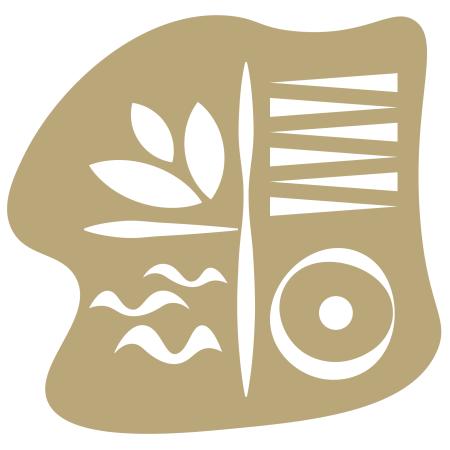
Montenegro embraces digitalization and new technologies to enhance biodiversity protection and promote sustainable resource management. As part of the “Biodiversity Mainstreaming into Sectoral Policies and Practices and Strengthening Protection of Biodiversity Hotspots in Montenegro” (GEF 7) initiative, the project introduces innovative solutions to improve environmental monitoring, combat deforestation, and strengthen institutional collaboration.
A key achievement is the establishment of a technological unit within the Ministry of Agriculture, equipped with drone technology, to monitor agricultural practices and their impact on biodiversity. The project facilitated the procurement of drones and provided comprehensive training for operators, ensuring relevant institutions have improved monitoring and data collection tools. These drones enable real-time surveillance, allowing for early detection of environmental threats.
The project piloted a digital tree tagging system in National Park Prokletije to tackle deforestation and illegal logging. Over 20,000 trees have been tagged using RFID technology, allowing precise tracking of tree health, species, age, and geolocation. This system enhances forest inventory management, supports conservation efforts, and helps prevent illegal logging.
Additionally, pheromone traps were deployed in National Parks Prokletije and Durmitor to address bark beetle infestations, a significant cause of forest degradation. Strategically placed in affected areas, the traps attract and capture beetles, reducing infestations and limiting tree mortality. This monitoring approach allows forestry experts to implement targeted interventions and mitigate environmental damage.
By integrating drones, digital tree tags, and pheromone traps, the project enhances biodiversity monitoring, enabling data-driven decision-making and ensuring long-term environmental sustainability. These technological advancements enhance efficiency, lower operational costs, and bolster Montenegro’s capacity to safeguard its forests and ecosystems.
Through cross-sectoral cooperation and the adoption of innovative solutions, Montenegro is setting a precedent for technology-driven conservation strategies that align with national and global sustainability goals. This initiative demonstrates how innovation, collaboration, and digital transformation can enhance biodiversity protection and natural resource management, ultimately paving the way for a more resilient and sustainable future.

